Frequent persons on Cuba's street signs
countries
44 names / 211 streets
José Martí
 26
José Julián Martí Pérez was a Cuban nationalist, poet, philosopher, essayist, journalist, translator, professor, and publisher, who is considered a Cuban national hero because of his role in the...
26
José Julián Martí Pérez was a Cuban nationalist, poet, philosopher, essayist, journalist, translator, professor, and publisher, who is considered a Cuban national hero because of his role in the...
Antonio Maceo
 22
Lt. General José Antonio de la Caridad Maceo y Grajales was a Cuban general and second-in-command of the Cuban Army of Independence.
22
Lt. General José Antonio de la Caridad Maceo y Grajales was a Cuban general and second-in-command of the Cuban Army of Independence.
Máximo Gómez
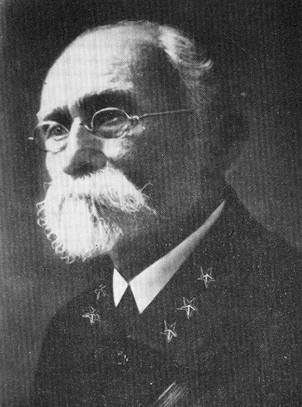 14
Máximo Gómez y Báez was a Dominican Generalissimo in Cuba's War of Independence (1895–1898). He was known for his controversial scorched-earth policy, which entailed dynamiting passenger trains and...
14
Máximo Gómez y Báez was a Dominican Generalissimo in Cuba's War of Independence (1895–1898). He was known for his controversial scorched-earth policy, which entailed dynamiting passenger trains and...
Carlos Manuel de Céspedes
 11
Carlos Manuel de Céspedes del Castillo was a Cuban revolutionary hero and First President of Cuba in Arms in 1868. Cespedes, who was a plantation owner in Cuba, freed his slaves and made the...
11
Carlos Manuel de Céspedes del Castillo was a Cuban revolutionary hero and First President of Cuba in Arms in 1868. Cespedes, who was a plantation owner in Cuba, freed his slaves and made the...
Camilo Cienfuegos
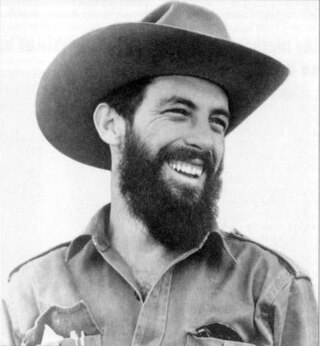 10
Camilo Cienfuegos Gorriarán was a Cuban revolutionary. One of the major figures of the Cuban Revolution, he was considered second only to Fidel Castro among the revolutionary leadership.
10
Camilo Cienfuegos Gorriarán was a Cuban revolutionary. One of the major figures of the Cuban Revolution, he was considered second only to Fidel Castro among the revolutionary leadership.
Calixto García
 9
Calixto García Íñiguez was a Cuban general in three Cuban uprisings, part of the Cuban War for Independence: the Ten Years' War, the Little War, and the War of 1895, itself sometimes called the Cuban...
9
Calixto García Íñiguez was a Cuban general in three Cuban uprisings, part of the Cuban War for Independence: the Ten Years' War, the Little War, and the War of 1895, itself sometimes called the Cuban...
Juan Bruno Zayas
 6
Juan Bruno Zayas Alfonso was a Cuban military leader and doctor of the Cuban War of Independence.
6
Juan Bruno Zayas Alfonso was a Cuban military leader and doctor of the Cuban War of Independence.
Salvador Cisneros Betancourt
 5
Salvador Cisneros Betancourt, marqués de Santa Lucía fue un político cubano, que llegó a ser presidente de la República de Cuba en Armas de 1873 a 1875. Nacido en el seno de una familia noble y...
5
Salvador Cisneros Betancourt, marqués de Santa Lucía fue un político cubano, que llegó a ser presidente de la República de Cuba en Armas de 1873 a 1875. Nacido en el seno de una familia noble y...
José de la Luz y Caballero
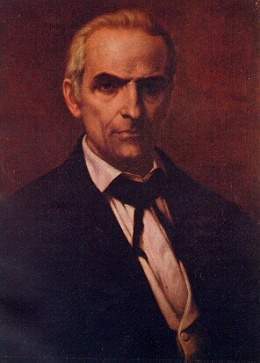 5
José Cipriano de la Luz y Caballero was a Cuban scholar, acclaimed by José Martí as "the father ... the silent founder" of Cuban intellectual life of the 19th century. Interest in Luz's work was...
5
José Cipriano de la Luz y Caballero was a Cuban scholar, acclaimed by José Martí as "the father ... the silent founder" of Cuban intellectual life of the 19th century. Interest in Luz's work was...
Frank País
 5
Frank País García was a Cuban revolutionary who campaigned for the overthrow of General Fulgencio Batista's government in Cuba. País was the urban coordinator of the 26th of July Movement, and was a...
5
Frank País García was a Cuban revolutionary who campaigned for the overthrow of General Fulgencio Batista's government in Cuba. País was the urban coordinator of the 26th of July Movement, and was a...
Serafín Sánchez
 5
Serafín Gualberto Sánchez Valdivia was a Cuban patriot, abolitionist and a participant of all three Cuban wars of independence. Additionally he participated in the Gómez-Maceo Plan. He reached the...
5
Serafín Gualberto Sánchez Valdivia was a Cuban patriot, abolitionist and a participant of all three Cuban wars of independence. Additionally he participated in the Gómez-Maceo Plan. He reached the...
Michael (archangel)
 4
Michael, also called Saint Michael the Archangel, Archangel Michael and Saint Michael the Taxiarch is an archangel in Judaism, Christianity, Islam, and the Baha'i faith. The earliest surviving...
4
Michael, also called Saint Michael the Archangel, Archangel Michael and Saint Michael the Taxiarch is an archangel in Judaism, Christianity, Islam, and the Baha'i faith. The earliest surviving...
John of God
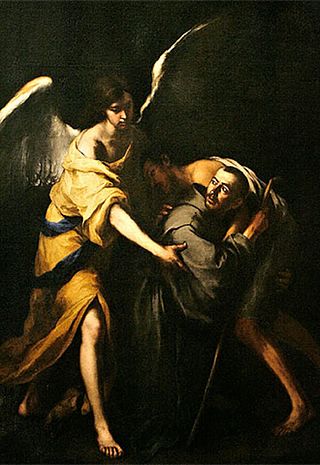 4
John of God, OH was a Portuguese soldier turned health-care worker in Spain, whose followers later formed the Brothers Hospitallers of Saint John of God, a Catholic religious institute dedicated to...
4
John of God, OH was a Portuguese soldier turned health-care worker in Spain, whose followers later formed the Brothers Hospitallers of Saint John of God, a Catholic religious institute dedicated to...
Lazarus of Bethany
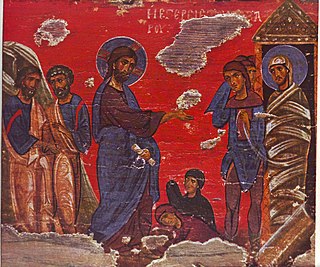 4
Lazarus of Bethany is a figure within the Christian Bible, mentioned in the New Testament in the Gospel of John, who four days after his death is restored to life by Jesus. This is seen by Christians...
4
Lazarus of Bethany is a figure within the Christian Bible, mentioned in the New Testament in the Gospel of John, who four days after his death is restored to life by Jesus. This is seen by Christians...
Saint Nicholas
 4
Saint Nicholas of Myra, also known as Nicholas of Bari, was an early Christian bishop of Greek descent from the maritime city of Patara in Anatolia during the time of the Roman Empire. Because of the...
4
Saint Nicholas of Myra, also known as Nicholas of Bari, was an early Christian bishop of Greek descent from the maritime city of Patara in Anatolia during the time of the Roman Empire. Because of the...
Adela Azcuy
 4
Gabriela de la Caridad Azcuy Labrador was a Cuban nurse and poet who participated in the Cuban War of Independence. On 10 February 1896, she joined the militia of Miguel Lores near Gramales as an...
4
Gabriela de la Caridad Azcuy Labrador was a Cuban nurse and poet who participated in the Cuban War of Independence. On 10 February 1896, she joined the militia of Miguel Lores near Gramales as an...
Jesus
 4
Jesus, also referred to as Jesus Christ, Jesus of Nazareth, and many other names and titles, was a first-century Jewish preacher and religious leader. He is the central figure of Christianity, the...
4
Jesus, also referred to as Jesus Christ, Jesus of Nazareth, and many other names and titles, was a first-century Jewish preacher and religious leader. He is the central figure of Christianity, the...
Francisco Vicente Aguilera
 4
Francisco Vicente Aguilera was a Cuban patriot born in Bayamo, Cuba on June 23, 1821. He had ten children with his wife Ana Manuela Maria Dolores Sebastiana Kindelan y Sanchez. He studied at the...
4
Francisco Vicente Aguilera was a Cuban patriot born in Bayamo, Cuba on June 23, 1821. He had ten children with his wife Ana Manuela Maria Dolores Sebastiana Kindelan y Sanchez. He studied at the...
Christopher Columbus
 4
Christopher Columbus was an Italian explorer and navigator from the Republic of Genoa who completed four Spanish-based voyages across the Atlantic Ocean sponsored by the Catholic Monarchs, opening...
4
Christopher Columbus was an Italian explorer and navigator from the Republic of Genoa who completed four Spanish-based voyages across the Atlantic Ocean sponsored by the Catholic Monarchs, opening...
Flor Crombet
 4
Francisco Adolfo "Flor" Crombet Tejera was a Cuban patriot and participated in the three independence conflicts. He was appointed head, in commission, of the division of Cuba and Bayamo and was Major...
4
Francisco Adolfo "Flor" Crombet Tejera was a Cuban patriot and participated in the three independence conflicts. He was appointed head, in commission, of the division of Cuba and Bayamo and was Major...
Lázaro Cárdenas
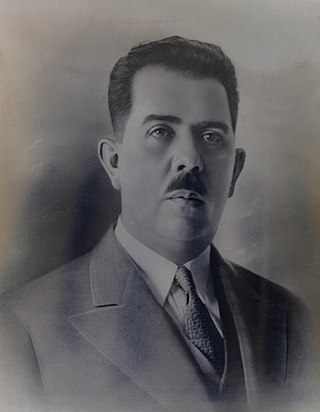 4
Lázaro Cárdenas del Río was a Mexican army officer and politician who served as president of Mexico from 1934 to 1940. Previously, he served as a general in the Constitutional Army during the Mexican...
4
Lázaro Cárdenas del Río was a Mexican army officer and politician who served as president of Mexico from 1934 to 1940. Previously, he served as a general in the Constitutional Army during the Mexican...
Salvador Allende
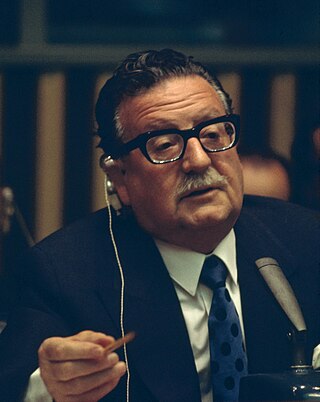 3
Salvador Guillermo Allende Gossens was a Chilean socialist politician who served as the 28th president of Chile from 1970 until his death in 1973. As a democratic socialist committed to democracy, he...
3
Salvador Guillermo Allende Gossens was a Chilean socialist politician who served as the 28th president of Chile from 1970 until his death in 1973. As a democratic socialist committed to democracy, he...
Félix Varela
 3
Félix Varela y Morales was a Cuban Catholic priest and independence leader who is regarded as a notable figure in the Catholic Church in both his native Cuba and the United States, where he also...
3
Félix Varela y Morales was a Cuban Catholic priest and independence leader who is regarded as a notable figure in the Catholic Church in both his native Cuba and the United States, where he also...
Mariana Grajales Cuello
 3
Mariana Grajales Cuello
(July 12, 1815 – November 28, 1893) is a Cuban patriot and icon of the women's struggle for equality and the fight for an independent Cuba free from slavery.
3
Mariana Grajales Cuello
(July 12, 1815 – November 28, 1893) is a Cuban patriot and icon of the women's struggle for equality and the fight for an independent Cuba free from slavery.
Rafael Trejo González
 3
Rafael Trejo González fue un joven revolucionario cubano, alumno del tercer año de la Facultad de Derecho de la Universidad de La Habana, asesinado en 1930 durante las luchas estudiantiles contra...
3
Rafael Trejo González fue un joven revolucionario cubano, alumno del tercer año de la Facultad de Derecho de la Universidad de La Habana, asesinado en 1930 durante las luchas estudiantiles contra...
Luis Estévez
 3
Luis Estévez was a Cuban-born American fashion designer and costume designer, active between 1951 until 1997. According to the New York Times, "Luis Estevez always did make a lady look like a vamp",...
3
Luis Estévez was a Cuban-born American fashion designer and costume designer, active between 1951 until 1997. According to the New York Times, "Luis Estevez always did make a lady look like a vamp",...
Saint Peter
 3
Saint Peter, also known as Peter the Apostle, Simon Peter, Simeon, Simon, or Cephas, was one of the Twelve Apostles of Jesus Christ and one of the first leaders of the early Christian Church. He...
3
Saint Peter, also known as Peter the Apostle, Simon Peter, Simeon, Simon, or Cephas, was one of the Twelve Apostles of Jesus Christ and one of the first leaders of the early Christian Church. He...
Vladimir Lenin
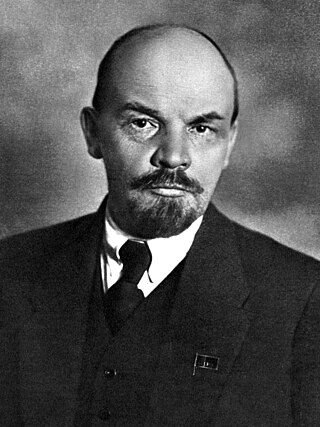 3
Vladimir Ilyich Ulyanov, better known as Vladimir Lenin, was a Russian revolutionary, Soviet politician, and political theorist who was the founder and first leader of the Russian Soviet Federative...
3
Vladimir Ilyich Ulyanov, better known as Vladimir Lenin, was a Russian revolutionary, Soviet politician, and political theorist who was the founder and first leader of the Russian Soviet Federative...
Ignatius of Loyola
 2
Ignatius of Loyola, venerated as Saint Ignatius of Loyola, was a Spanish Catholic priest and theologian, who, with six companions, founded the religious order of the Society of Jesus (Jesuits), and...
2
Ignatius of Loyola, venerated as Saint Ignatius of Loyola, was a Spanish Catholic priest and theologian, who, with six companions, founded the religious order of the Society of Jesus (Jesuits), and...
Carlos Finlay
 2
Carlos Juan Finlay was a Cuban epidemiologist recognized as a pioneer in the research of yellow fever, determining that it was transmitted through mosquitoes Aedes aegypti.
2
Carlos Juan Finlay was a Cuban epidemiologist recognized as a pioneer in the research of yellow fever, determining that it was transmitted through mosquitoes Aedes aegypti.
Anselm of Canterbury
 2
Anselm of Canterbury OSB, also called Anselm of Aosta after his birthplace and Anselm of Bec after his monastery, was an Italian Benedictine monk, abbot, philosopher, and theologian of the Catholic...
2
Anselm of Canterbury OSB, also called Anselm of Aosta after his birthplace and Anselm of Bec after his monastery, was an Italian Benedictine monk, abbot, philosopher, and theologian of the Catholic...
Ignacio Agramonte
 2
Ignacio Agramonte y Loynaz was a Cuban revolutionary, who played an important part in the Ten Years' War (1868–1878).
2
Ignacio Agramonte y Loynaz was a Cuban revolutionary, who played an important part in the Ten Years' War (1868–1878).
Quintín Bandera
 2
José Quintín Bandera Betancourt was a military leader of the Cuban insurrection against the Spanish during the Cuban War of Independence. In 1906, Bandera, led an army of insurgents toward Havana,...
2
José Quintín Bandera Betancourt was a military leader of the Cuban insurrection against the Spanish during the Cuban War of Independence. In 1906, Bandera, led an army of insurgents toward Havana,...
Bartolomé Masó
 2
Bartolomé de Jesús Masó Márquez was a Cuban politician and military, patriot for Cuban independence from the colonial power of Spain, and later President of the República en Armas.
2
Bartolomé de Jesús Masó Márquez was a Cuban politician and military, patriot for Cuban independence from the colonial power of Spain, and later President of the República en Armas.
Saint Dominic
 2
Saint Dominic,, also known as Dominic de Guzmán, was a Castilian Catholic priest and the founder of the Dominican Order. He is the patron saint of astronomers and natural scientists, and he and his...
2
Saint Dominic,, also known as Dominic de Guzmán, was a Castilian Catholic priest and the founder of the Dominican Order. He is the patron saint of astronomers and natural scientists, and he and his...
Isidore the Laborer
 2
Isidore the Laborer, also known as Isidore the Farmer, was a Spanish farmworker known for his piety toward the poor and animals. He is the Catholic patron saint of farmers, and of Madrid; El...
2
Isidore the Laborer, also known as Isidore the Farmer, was a Spanish farmworker known for his piety toward the poor and animals. He is the Catholic patron saint of farmers, and of Madrid; El...
Jesús Menéndez
Saint Joseph
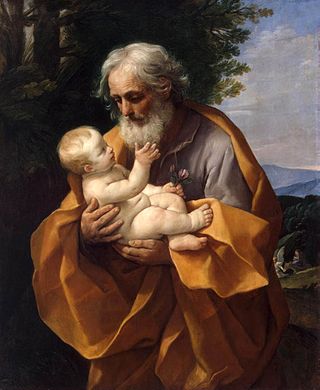 2
Joseph was a 1st-century Jewish man of Nazareth who, according to the canonical Gospels, was married to Mary, the mother of Jesus, and was the legal father of Jesus.
2
Joseph was a 1st-century Jewish man of Nazareth who, according to the canonical Gospels, was married to Mary, the mother of Jesus, and was the legal father of Jesus.
José Antonio Saco
 2
José Antonio Saco was a statesman, deputy to the Spanish Cortes, writer, social critic, publicist, essayist, anthropologist, historian, and one of the most notable Cuban figures from the nineteenth...
2
José Antonio Saco was a statesman, deputy to the Spanish Cortes, writer, social critic, publicist, essayist, anthropologist, historian, and one of the most notable Cuban figures from the nineteenth...
Joaquín de Agüero
 2
Joaquín de Agüero was a Cuban revolutionary. In 1843 he freed all his slaves. In 1851 he headed an insurrection against the Spanish government, in the central part of the island coinciding with the...
2
Joaquín de Agüero was a Cuban revolutionary. In 1843 he freed all his slaves. In 1851 he headed an insurrection against the Spanish government, in the central part of the island coinciding with the...
Leoncio Vidal
 2
Leoncio Vidal y Caro was a Cuban revolutionary that fought in the Cuban War of Independence. A colonel, he fell in battle in Santa Clara, Cuba. He is considered a hero in Cuba and the Parque Vidal in...
2
Leoncio Vidal y Caro was a Cuban revolutionary that fought in the Cuban War of Independence. A colonel, he fell in battle in Santa Clara, Cuba. He is considered a hero in Cuba and the Parque Vidal in...
Manuel Fajardo
 2
Manuel Piti Fajardo Rivero was a Cuban revolutionary physician and fighter of the Rebel Army in the Sierra Maestra.
2
Manuel Piti Fajardo Rivero was a Cuban revolutionary physician and fighter of the Rebel Army in the Sierra Maestra.
Catherine of Alexandria
 2
Catherine of Alexandria, also spelled Katherine is, according to tradition, a Christian saint and virgin, who was martyred in the early fourth century at the hands of the emperor Maxentius. According...
2
Catherine of Alexandria, also spelled Katherine is, according to tradition, a Christian saint and virgin, who was martyred in the early fourth century at the hands of the emperor Maxentius. According...
Narciso López
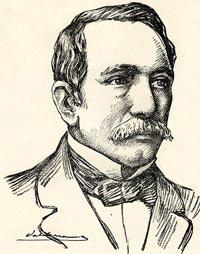 2
Narciso López de Urriola was a Venezuelan-born adventurer and Spanish Army general who is best known for his expeditions aimed at liberating Cuba from Spanish rule in the 1850s. His troops carried a...
2
Narciso López de Urriola was a Venezuelan-born adventurer and Spanish Army general who is best known for his expeditions aimed at liberating Cuba from Spanish rule in the 1850s. His troops carried a...